By: Luis Arias, Inside Technical Sales, SFA Saniflo Submersible pumps have been game-changers for over a century, far outpacing old-school pumping methods and becoming essential tools across residential, commercial, and industrial applications. These workhorses, built to get dirty in the fluids they pump, broke through the constraints old tech couldn’t handle, providing contractors a way Read more
Industry Blogs
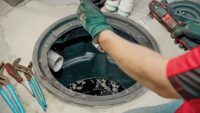
By: Luis Arias, Inside Technical Sales, SFA Saniflo
Submersible pumps have been game-changers for over a century, far outpacing old-school pumping methods and becoming essential tools across residential, commercial, and industrial applications. These workhorses, built to get dirty in the fluids they pump, broke through the constraints old tech couldn’t handle, providing contractors a way to install more efficient and dependable pumps.
Let’s focus on the compact units – the ‘sewage ejectors’ – that contractors throw in daily for home and light commercial jobs. Rolled out in the early 20th century, these nifty little pumps chucked the rulebook for gravity-based systems, offering a slick solution for moving sewage out of the deepest basements or flat yards where gravity checks out. When sewage ejectors hit the market, they didn’t just raise the bar; they threw it out and set a new standard in wastewater management, clearing the path for the updated tech used now.
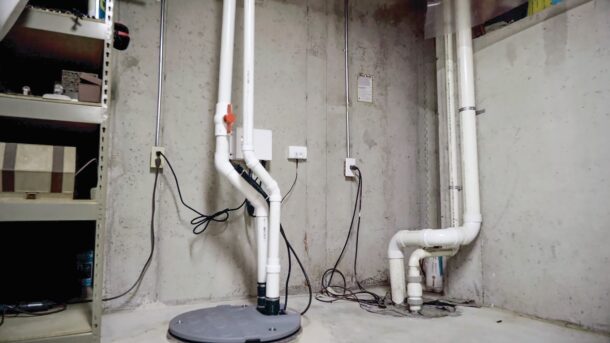
But let’s cut to the chase: sewage ejector tech hasn’t seen much action since it first appeared. As homes and systems age, installers are stuck with the same old tech, facing the same old headaches. The lack of new gear means they deal with the same float switch failures, blockages, and nasty repair jobs.
Consequently, advancements are urgently needed to tackle the everyday battles installers face with float switches, clogs, and the clean-up that comes after. It’s time for the next leap forward to make installation easier and keep businesses pumping.
Too Soon to Fail
The lifespan of sewage ejectors is a concern for many industry professionals. Generally, these devices have a lifespan of around 7 to 10 years. However, a common issue during this timeframe is the malfunctioning of the float switch component.
The float switch, responsible for controlling the pump’s activation and deactivation, often fails after two to five years of usage. This frequent occurrence has become a well-known challenge in the field, prompting installers to anticipate and prepare for the potential need for repair or replacement within a relatively short span. Addressing this issue is crucial to ensure the continued reliable operation of sewage ejectors and to minimize disruptions in wastewater management systems.
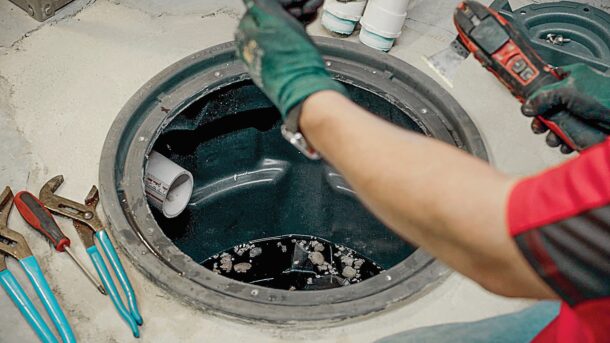
Here are other common challenges of existing sewage ejectors:
- Frequent clogging and jamming: Sewage ejector pumps move wastewater from lower to higher elevations. In the process, they can encounter solid waste and a potential excess of sanitary napkins or toilet paper, which can cause blockages. If the pump is not properly equipped or maintained, these blockages can disrupt the flow of wastewater and result in backups and overflows, causing potential health hazards and property damage.
- Frequent occurrence of system failures: Sewage ejector pumps can experience mechanical issues, such as motor or pump malfunctions, leading to pump failure and ineffective wastewater conveyance. Furthermore, improper installation or sizing of the pump can also contribute to system failures, as it may need more capacity to handle the volume and pressure requirements.
- Frequent repairs with high maintenance costs: Over time, these sewage ejector pumps can become prone to issues such as motor burnout, worn-out seals, or, as mentioned, malfunctioning float switches. These problems can result in pump failures, leading to sewage backups and potential health hazards. The costs of frequent repairs, including parts and labor, can quickly add up.
- Messy Repairs: Traditional sewage ejector pumps can be difficult, dirty, and time-consuming to repair and may require extensive professional assistance. Complex repairs may even involve digging up floors to access and replace the pump. Furthermore, the mess and odors associated with sewage pump repairs can be unpleasant and unhealthy.
Grinder Pump Technology: Alternative Solution
Dominick Rudd, a seasoned plumber at Bush Plumbing outside Indianapolis, has successfully implemented the SFA Saniflo Sanipit 24 GR retrofit pump kit as a reliable solution for replacing faulty sewage ejectors. This innovative product is compatible with existing 24-inch basins from major manufacturers like Liberty Pumps, Zoeller, and Myers, simplifying installation without extensive modifications.
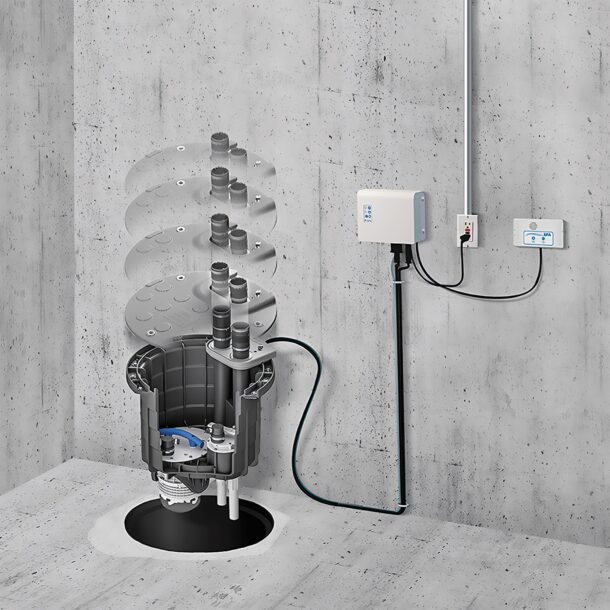
Rudd praises the Sanipit for its easy installation, maintenance convenience, and dry-cavity design that separates the motor from sewage. The built-in, 1-horsepower grinder motor efficiently handles waste, improving performance and customer satisfaction. Rudd highlights the pump’s easy access for maintenance and its long lifespan, promising minimal upkeep and fewer replacements for homeowners.
Major Benefits for Contractors
By incorporating the Sanipit 24 GR retrofit pump kit into his projects, Rudd is poised to overcome the common challenges associated with sewage ejectors across North America.
Fellow contractors like Rudd benefit from simplified installations, reduced maintenance requirements, and the ability to offer cost-effective solutions to their clients.
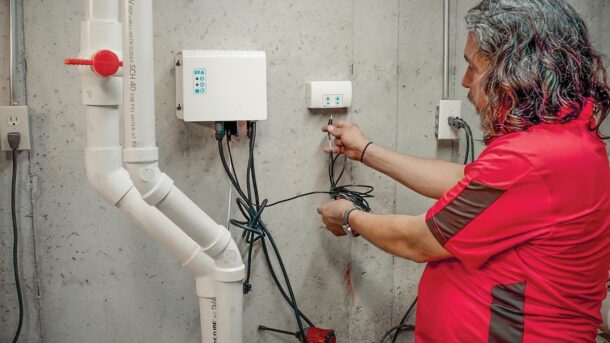
Notably, the Sanipit 24 GR retrofit pump kit aligns perfectly with Bush Plumbing’s commitment to providing its customers with top-notch service and innovative solutions. By leveraging the kit’s features and benefits, Rudd and the Bush team deliver value to their clients, enhancing their company’s reputation as trusted plumbing experts.
With a four-year warranty, contractors can now enjoy peace of mind for their clients, knowing they installed dependable and efficient waste management systems. At the same time, they have also found a cost-effective, reliable replacement solution that streamlines their work and enhances their professionalism.
About the author: Luis Arias has been working for SFA Saniflo for 15 years as Inside Technical Sales. His vast knowledge of pump systems and the plumbing trade has been used on many large-scale projects. Luis has contributed to the overall company success by working directly with architects, engineers, and trade professionals on engineering bids.

By Heather Ripley If you’ve been in the trades for a number of years, chances are that you have some good tips you can offer others. Whether your expertise is unclogging drains, troubleshooting an HVAC system or running a home service business, you have opinions that the news media and trade publications are interested in Read more
By Heather Ripley
If you’ve been in the trades for a number of years, chances are that you have some good tips you can offer others.
Whether your expertise is unclogging drains, troubleshooting an HVAC system or running a home service business, you have opinions that the news media and trade publications are interested in knowing.
But turning your knowledge into coveted earned media can be difficult if you haven’t developed a solid public relations strategy.
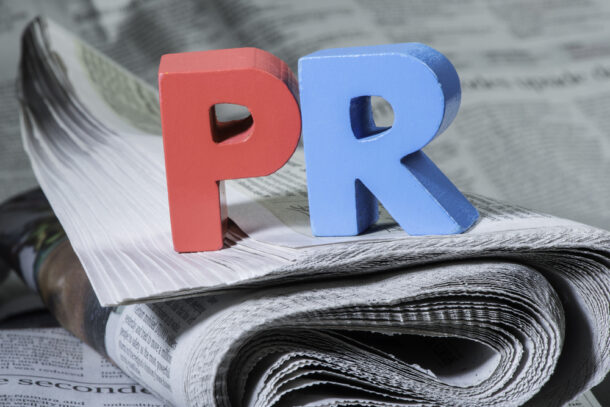
Why Earned Media is Important
If you’ve spent any time around your company’s marketing team, you already know that most businesses have access to three types of media:
- Owned media. This refers to your website, blogs and social media channels. These are platforms that you own and control and can, therefore, fill with whatever content you deem appropriate.
- Paid media. This refers to the media you pay for and can include pay-per-click advertising, display ads, radio advertising or billboards
- Earned media. This type of media includes any content picked up or created by a third party. This includes reposts, reviews and, most importantly, stories written by news or trade publication reporters that feature you or your company.
Of these three types of media, earned media has the most credibility with consumers. Several surveys in the past few years have found that nine out of 10 consumers trust earned media because they view it as being written by an unbiased third party.
And that’s why it’s important that your social media and blog posts get shared by customers online and that your leadership gets quoted in news articles about topics surrounding your industry.
When an audience sees that others trust your opinion enough to share it, it helps you build credibility.
Work to Get Noticed
Now that you know why getting earned media attention is important, you should set aside some time to ensure that your expertise is put on blast. Some ways to get noticed include:
- Creating quality content. Make sure your website’s blog and news sections are always up-to-date. Writing blog posts that provide tips to homeowners and sharing them on social media is always a good way to associate your company with helpful content.
- Offering your opinion. If there is a cold snap on the way in your area, reach out to local reporters and offer to explain to their audience some great ways to keep pipes from freezing. Keep an eye on industry trends, too, so you can speak about those topics in trade industry publications.
- Building relationships. Get to know the reporters and editors that cover your community and your trade. You should also reach out to podcasters and other influencers in your industry and offer to come on their shows to offer your expertise.
Taking time out of your day to get noticed can be difficult when you are trying to build your business, but you should view it as an investment.
You can also hire a PR team to help you craft compelling content and pitch your expertise. An effective PR partner should have experienced content writers on staff, and they should have a group of media relations experts to pitch your knowledge to their cultivated press pool.
There’s no reason why your expertise should go untapped. It’s a great opportunity for you to provide consumers with sound advice while building trust and being the expert in your field.

Heather Ripley is founder and CEO of Ripley PR, an elite, global public relations agency specializing in the skilled trades, franchising and B2B tech industries. Ripley PR is recognized as the top PR agency for the home service industry. It also has been listed by Entrepreneur Magazine as a Top Franchise PR Agency for six consecutive years and was named to Forbes’ America’s Best PR Agencies for 2021. Heather Ripley was recently named as a 2024 PRNews Top Women honoree in the business entrepreneur category. She is also the author of “NEXT LEVEL NOW: PR Secrets to Drive Explosive Growth for your Home Service Business,” which is now available on all audiobook platforms. For additional information, visit www.ripleypr.com.
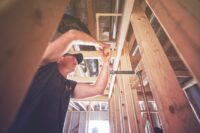
CPVC is the only residential plumbing material that is immune to degradation or corrosion from exposure to chlorinated drinking water. CPVC is even unaffected by drinking water treated with aggressive methods that can increase the likelihood of premature failure in PEX and copper systems such as chlorine dioxide and chloramines. That means CPVC failures can Read more
CPVC is the only residential plumbing material that is immune to degradation or corrosion from exposure to chlorinated drinking water. CPVC is even unaffected by drinking water treated with aggressive methods that can increase the likelihood of premature failure in PEX and copper systems such as chlorine dioxide and chloramines. That means CPVC failures can almost always be traced to one of two causes: installation error or exposure to incompatible chemicals.
The Solvent Weld Process for Copper Tube Size CPVC
CPVC uses a solvent weld process to permanently weld fittings to pipes. When the process is performed properly, the pipe and fitting are fused into a single piece that creates a joint that is stronger than the pipe or fitting on their own. For plumbers who work with CPVC regularly, the solvent weld process gets to be second nature. But if you are new to CPVC, here are a few tips to keep in mind when using solvent cement. The tips provided are specific to Copper Tube Size CPVC (which is typically tan in color) and may not apply to IPS Schedule 80 CPVC (which is typically gray in color). Always consult your manufacturer for specific installation instructions.
- Use the right cement: Copper Tube Size CPVC can use one-step cement, such as FlowGuard® Gold 1-Step Yellow or new High Contrast Green Cement. The use of green solvent cement with CPVC was added to the 2024 codes of all major bodies to make it easier to visually inspect an installation.Because service plumbers often need to make repairs quickly and get to the next job, a specially formulated solvent cement, Oatey® Orange Lava, was developed. It enables one-step cure times as fast as 15 minutes for cold water lines. Always verify code requirements and follow the solvent cement manufacturer’s recommendations for cure times and installation procedures.
- Cut square and chamfer: Before applying solvent cement, the pipe should be cut square, and any tailings and bevel on the pipe end removed by chamfering.
- Avoid dry fits: A dry fit is simply putting a pipe and fitting together without applying solvent cement. This approach can increase the likelihood one or more fittings will not be solvent welded. Welding the system joint by joint is a better practice. You should check the fit of the pipe before assembling the joint. Without solvent cement, the pipe should fit tightly inside the fitting without bottoming out.
- Apply the right amount of cement: A good practice is to apply a heavy, even coat of one-step solvent cement to the outside of the pipe end. Then, using the same applicator without additional cement, apply a thin coat inside the fitting socket. Excess cement should not be allowed to puddle in the fitting assembly.
- Bottom out the pipe in the fitting: The more surface area of pipe that contacts the fitting, the stronger the bond. After the cement has been applied, the pipe should be inserted until it bottoms out against the fitting.
- Watch extreme temperatures: According to manufacturers of one-step CPVC solvent cement, the cement works best in temperatures between 40° F and 110° F. Outside that range, special precautions should be taken. Cements will cure more quickly in high temperatures and more slowly in cold temperatures. Check the can of solvent cement for proper working temperatures.

Expansion and Contraction
All piping materials will expand and contract based on differences between the installation and operating temperature of the system and changes in the temperature of the water flowing through the pipe. FlowGuard Gold CPVC can expand about 1 inch per 50 feet of straight length of pipe per 50°F temperature increase. If expansion and contraction aren’t accounted for in installation, the stress caused by this expansion can rise to 1200 psi. Because of CPVC’s incredible strength, this may not cause immediate failure in the system, but long-term exposure to these extreme stresses can cause failures after years in service.
In many cases, normal changes of direction can be enough to account for expansion and contraction provided the natural movement of the pipe is not restricted and there is adequate spacing between elbows and hangers. Overtightening pipe hangers may also restrict lateral movement of the pipe. For long, straight runs, loops or offsets can be used. If you have any questions, consult the manufacturer’s installation guidelines.
Chemical Incompatibility
If properly installed CPVC pipe experiences a failure, the likely culprit is contact with incompatible chemicals. Depending on the type and amount of incompatible chemical a pipe is exposed to, the failure may happen quickly or could take years to develop. For example, CPVC can be softened over time by the plasticizers contained in some rubbers and flexible vinyl products, so these materials should be prevented from contacting the pipe or fitting.
Service plumbers are most likely to encounter chemical incompatibility under sinks where the pipe can be exposed to surfactant chemicals found in some household cleaners. In these situations, a CPVC-to-copper stub-out should be used instead of stubbing out with a length of CPVC pipe.
The FBC™ System Compatible Program can be used to identify materials that are compatible and incompatible with FlowGuard Gold, BlazeMaster and Corzan CPVC. For other brands of CPVC piping, consult with the specific manufacturer(s) for compatibility information.

Handling Aged Pipe
As it ages, CPVC naturally becomes more rigid and may even show signs of discoloration. These changes do not reduce the expected service life of the pipe when properly installed. In fact, the pressure-bearing capability of CPVC pipes actually increases with age. But aged pipe should be handled and cut differently than new pipe. A C-style tubing cutter, fine-tooth saw or wheel cutter should be used when servicing CPVC. Ratchet cutters or shears are generally not recommended.
The Professional Plumber’s Choice
Professional plumbers appreciate CPVC because it is easy to work with and results in a clean, professional installation that highlights the plumber’s craftmanship and commitment to quality. For more information on CPVC, including step-by-step installation instructions and other resources, visit flowguardgold.com.
 Jonathan Simon is the North American residential plumbing manager for Lubrizol Advanced Materials Inc., the parent company for FlowGuard Gold Pipe and Fittings.
Jonathan Simon is the North American residential plumbing manager for Lubrizol Advanced Materials Inc., the parent company for FlowGuard Gold Pipe and Fittings.
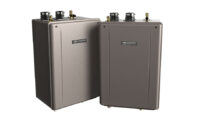
Noritz continues to lead with innovation with the recent unveiling of the newly upgraded EZ Series of Residential Condensing Tankless Water Heaters. These powerful, simple-to-install units provide significant energy and cost-savings to home and small-business owners and feature industry-first technology designed with the owner in mind. Originally introduced in 2017, the EZ Series is a Read more
Noritz continues to lead with innovation with the recent unveiling of the newly upgraded EZ Series of Residential Condensing Tankless Water Heaters. These powerful, simple-to-install units provide significant energy and cost-savings to home and small-business owners and feature industry-first technology designed with the owner in mind.
Originally introduced in 2017, the EZ Series is a proven performer, and its many installation advantages are familiar to the American market. But its recent upgrades and updates warrant a closer inspection by even the most experienced professional water heater installers and their customers. Here are nine key features you don’t want to miss!
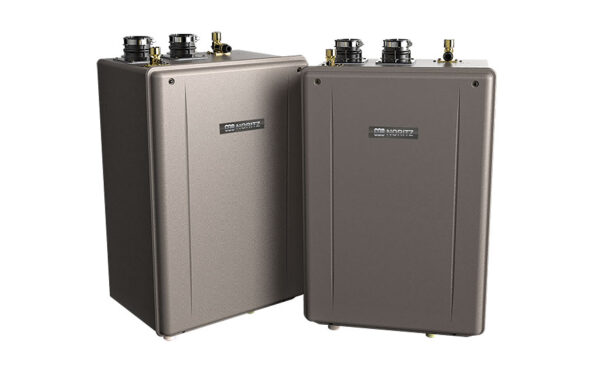
- Easy-peasy installation
The switch from tank to tankless can be daunting, but the EZ Series simplifies the process. The top-mount, hot and cold-water connections eliminate complex, new-plumbing work.
The existing flex vent from the pre-existing tank heater can be repurposed as a chase for the new venting, while the tank unit’s half-inch gas line can also be reused with the new EZ Series models. Taken together, all these benefits add up to time and cost savings for both the installer and the home or business owner.
- Seamless adaptation to warmer climates
Any concerns over how a tankless water heater can handle minimal demands for heat — specifically, in warm summer months — can be eliminated with the EZ Series’ new, industry-first Steady BTU (SBTU) Mode.
The burner-control technology in the EZ Series, which offers highly precise control of the combustion process, reduces the effective minimum input by more than two-thirds when incoming water temperatures approach 90ºF. The result? — a minimum input of under 5,000 BTU per hour.
- Energy efficiency leader
The Uniform Energy Factor for the upgraded EZ Residential Tankless Series has been boosted from 0.95 to 0.96, an industry-leading rating that results in substantial energy savings and lower monthly fuel bills.
How? With the EZ Series, teamwork makes the dream work with a unique blending of two types of high-grade, stainless-steel heat exchangers that complement each other:
- The primary heat exchanger contains a higher tensile-strength stainless material that resists heat shock and cracking.
- The secondary exchanger, which produces acidic condensate when it extracts latent heat from combustion, is also made of a stainless-steel material that resists corrosion and scale buildup.
- Streamlined common venting
One of the upgraded EZ Series enhancements is a fully-integrated non-return valve (NRV) that eliminates the need to install the NRV externally between the heater and the common-vent header.
What’s the impact? First and foremost, the NRV is built into the unit, ensuring that the backflow of harmful exhaust from one unit into another non-operating unit will be safely prevented. In addition, installation and cost are significantly reduced.
- Extended vent lengths
The EZ Series units can be directly vented, using PVC, CPVC, or rigid polypropylene materials. With a 2-inch pipe, the vent length has been extended from 60 feet to 65 feet. With a 3-inch pipe, the vent length has risen from 100-feet to 150-feet.
- Durability backed by an industry-leading warranty
Both of the redesigned stainless-steel heat exchangers carry an industry-best, 25-year warranty, assuring peace of mind for the home or business owner.
- All-in-one bundles
For a worry-free installation, both of the upgraded EZ Series models (EZTR50 and EZTR75) are available in “EZTR Bundles” that include everything an installer needs for direct, indoor replacement of 50- and 75-gallon tank-type water heaters.
- Flexible placement
The EZ Series models can be installed indoors or outdoors. The choice is yours.
- Plethora of accessories
Additional accessories include a remote controller and cord, anchoring screws, and wall-mounting brackets. This bracket makes for easy installation and flexibility in placement as the unit can slide from left to right, which enables the installer to make adjustments post-installation. In addition, it provides space-saving benefits by freeing up valuable floor space.
For more information about the new EZ Series from Noritz, visit: http://www.ezseries.noritz.com.
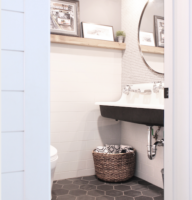
Choosing the right tubular for your project is essential as a professional plumber. Not only does it need to be functional, but it also needs to be cost-effective, durable, and aesthetically pleasing to your clients. This article will guide you through decision-making, weighing the pros and cons of brass and plastic materials, thickness options, and Read more
Choosing the right tubular for your project is essential as a professional plumber. Not only does it need to be functional, but it also needs to be cost-effective, durable, and aesthetically pleasing to your clients.
This article will guide you through decision-making, weighing the pros and cons of brass and plastic materials, thickness options, and specific applications.
Material Options: When selecting tubular products, you typically choose between brass and plastic materials. Brass tubular products (typically chrome-plated) are more durable and elegant, often used in higher-end or commercial projects. On the other hand, plastic tubular products (or polypropylene materials) are more affordable, easier to cut, and offer corrosion resistance. If you are working on a plumbing project with a tight budget, plastic tubular products may be the better option. Additionally, they are ideal for under-sink applications where aesthetics are less crucial.
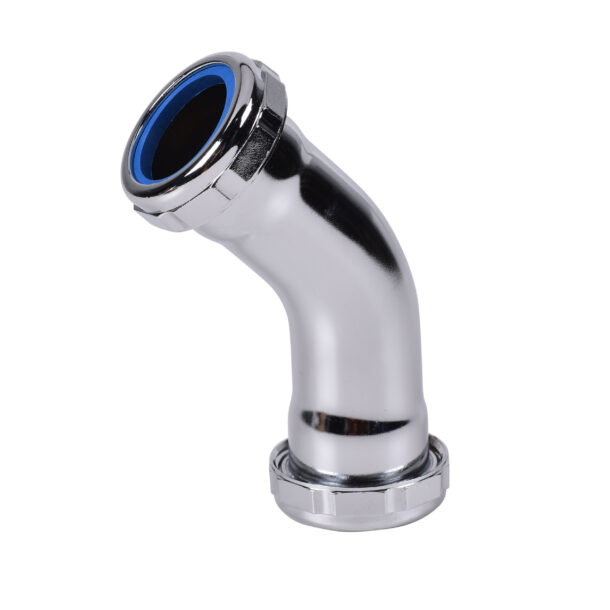 Factoring in the application is also crucial. For instance, there are certain scenarios where brass is unsuitable, such as in science labs or some dentist’s offices. The waste materials in these settings can be highly corrosive to metal, which could cause significant damage over time. In such cases, a plastic trap can be advantageous because plastic does not corrode and is generally unaffected by most chemicals.
Factoring in the application is also crucial. For instance, there are certain scenarios where brass is unsuitable, such as in science labs or some dentist’s offices. The waste materials in these settings can be highly corrosive to metal, which could cause significant damage over time. In such cases, a plastic trap can be advantageous because plastic does not corrode and is generally unaffected by most chemicals.
Unlike PVC/ABS pipes, plastic tubular products (or polypropylene materials) cannot be assembled with solvent cements but require slip nuts and washers.
Thickness Options: If you choose brass tubular products, you will need to consider the thickness options available. Brass tubular products come in three thicknesses: 17 gauge (commercial grade), 20 gauge (mid-range thickness), and 22 gauge (budget grade). The thicker the product, the more expensive it will be; however, it will also be more durable. If you are working on a commercial-grade project requiring more durability, you may consider using 17- gauge brass products. But for smaller residential projects, 20 or 22-gauge brass products will suffice.
On the other hand, all Oatey plastic tubular products are schedule 10 in thickness.
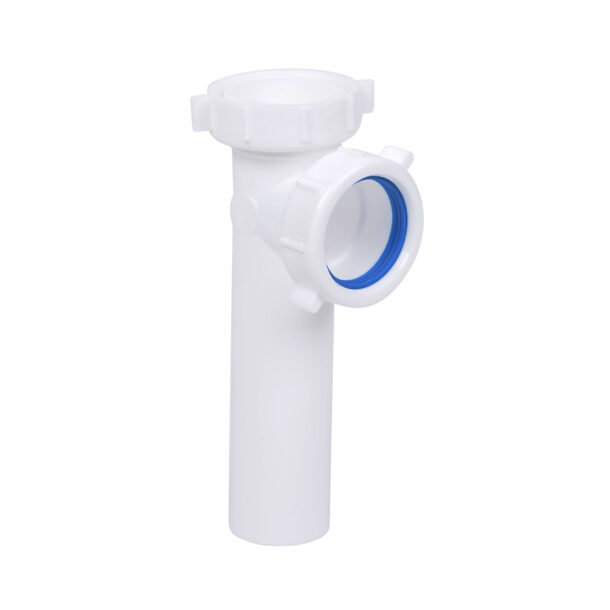
Size: The most common tubular product sizes are 1-1/4″ and 1-1/2″. These are available in brass and plastic products. The trap adapter connection to the branch drain in the wall will determine the largest tubular product that can be connected with a slip nut and washer. This point of connection can also be reduced for 1-1/4″ tubular assemblies with a reducing washer and slip nut. Bathroom sink installations usually are completed with 1-1/4″ products, but 1-1/2″ products will work. Kitchen sink installations can only be completed with 1-1/2″ products.
Specific Applications: To choose the right tubular for your project, you need to know the specific applications available. Oatey offers a wide range of tubular products for various applications, including P-Traps, S-Traps, Wall Bends, Extension Tubes, and more. Additionally, they provide covers for ADA sink installations, including center/end outlet waste covers and P-trap covers. You must choose the right application for your project, ensuring it fits correctly with other plumbing components.
When selecting the best tubular products, consider the application. Oatey offers a variety of tubular products, including P-Traps, S-Traps, Wall Bends, Extension Tubes, and more, all designed for specific applications.
Here are examples of tubular applications and the appropriate tubular product for each.
- P-Traps: Ideal for under-sink installations, P-Traps are designed to prevent sewer gases from escaping into your home. They are most commonly used in bathroom and kitchen sinks.
- S-Traps: S-Traps are similar to P-Traps but are no longer approved for installations and are primarily in older homes and buildings.
- Wall Tubes: These are pieces of pipe with a curve that fits under the sink and connects the P-Trap to the house’s sanitary system. Wall Tubes are connected to the J-Bend to form the P-Trap and direct wastewater from the sink drain to the waste line without leaks.
- Extension Tubes: These extend the waste pipe to the wall or floor. Extension Tubes come in various lengths and can be cut to size, offering flexibility for accommodating different installation needs.
- Double Slip Joint Offsets: Double Slip Joint Offsets are essential for creating a seamless connection between two pipes at different heights or angles. They come in handy when you need to navigate around obstacles during a plumbing installation.
- Branch Tailpieces: Branch Tailpieces are used to connect a dishwasher discharge hose to the sanitary system, making them ideal for dual-basin or single-bowl kitchen sinks that do not have a garbage disposal.
- End Outlet Continuous Waste: Ideal for dual-basin kitchen sinks.
- Center Outlet Continuous Waste: Used when the drain is centered under a dual-basin sink.
- Direct Connect Waste: Offers a direct connection to the sink basket strainer.
- J-Bends: Helps to form the P-Trap under the sink, connecting to wall tube.
- Captured Nuts and Washers: Made of durable polypropylene, these are used to secure your plumbing fixtures.
Accessories and Other Best Practices: Oatey offers a variety of tubular accessories, including slip joint nuts and washers, flanges, air gaps, and multiple garbage disposal accessories. It is always best to use these accessories with your tubular products to ensure secure connections and prevent leaks.
Further, Oatey recommends using thread tapes or pipe joint compounds on the fine threads of the pop-up tailpiece to prevent leakage. Additionally, considering corrosion resistance and insulating tubular pipes can increase efficiency and durability.
Considering corrosion resistance and insulating tubular pipes is essential for efficiency. Galvanized and stainless steel piping are not commonly used for tubular products, so only use them if your project demands it. Thread tapes and pipe joint compounds may also be used on the fine threads of a pop-up tailpiece to prevent leakage.
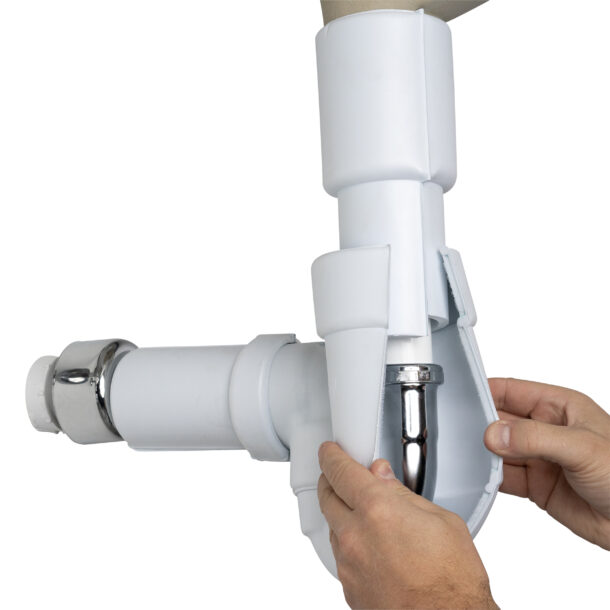
Oatey offers covers for ADA sink installations, including center/end outlet waste covers and P-trap covers.
Please note that the specific type of tubular product you will need depends on the requirements of your plumbing project. Be sure to understand these requirements before making a purchase. Always consult local building regulations and professionals as required.
In conclusion, selecting the right tubular for your project as a professional plumber is crucial. Weighing the material options, thickness options, specific applications, and best practices can help you make the right decision for your project.
 About the Author
About the Author
Sean Comerford is Technical Applications Manager at Oatey Co. He is third-generation tradesman with nearly 20 years of plumbing experience, including serving as the lead plumber for commercial & residential new construction, service and fire protection jobs. He holds a State of Ohio Fire Protection License for Sprinkler and Standpipe.
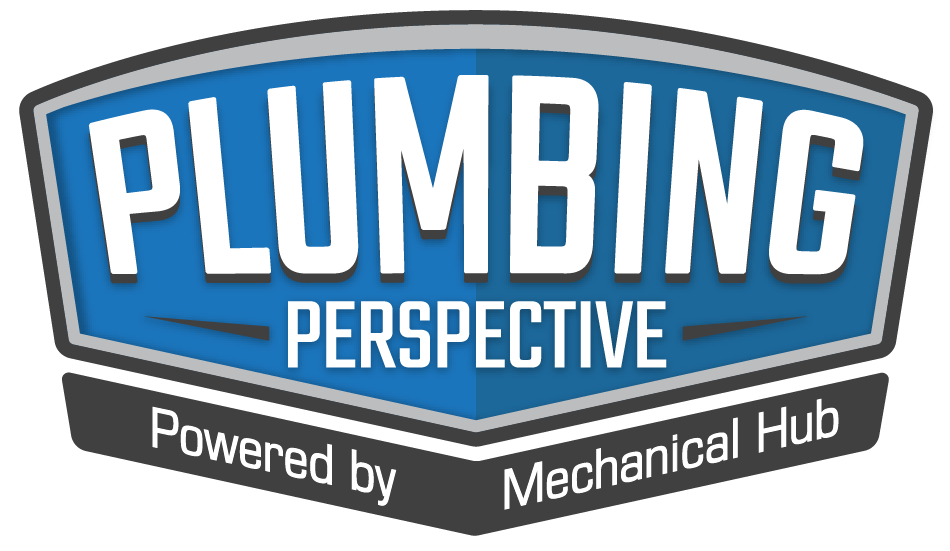
 About the Author
About the Author